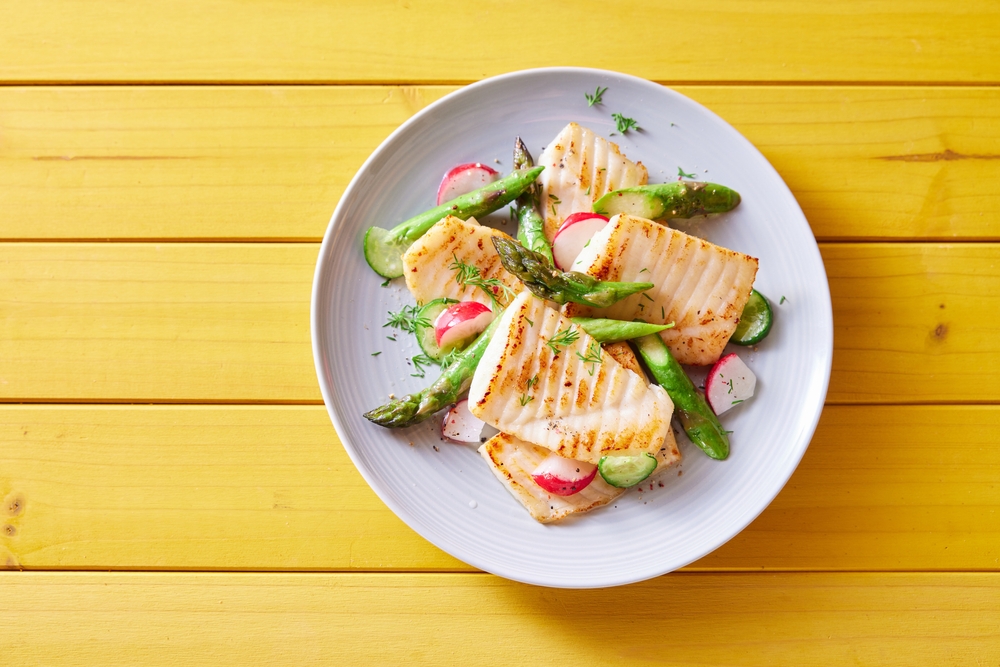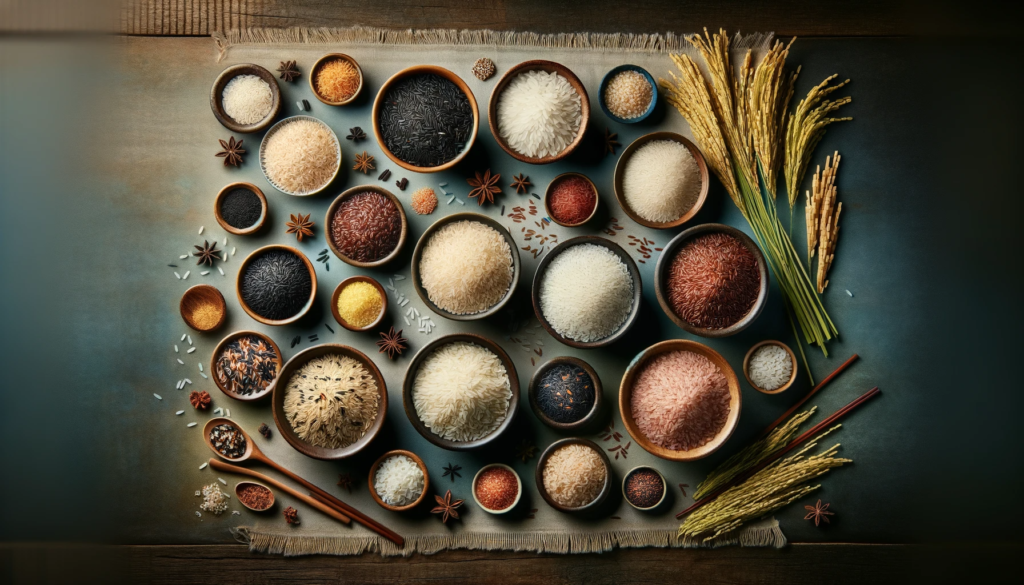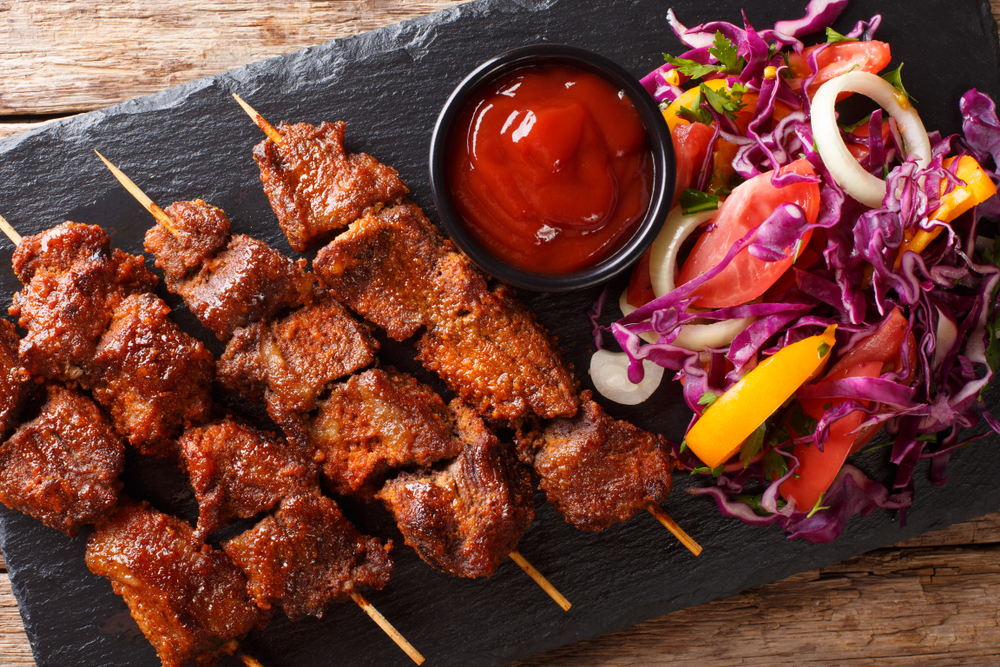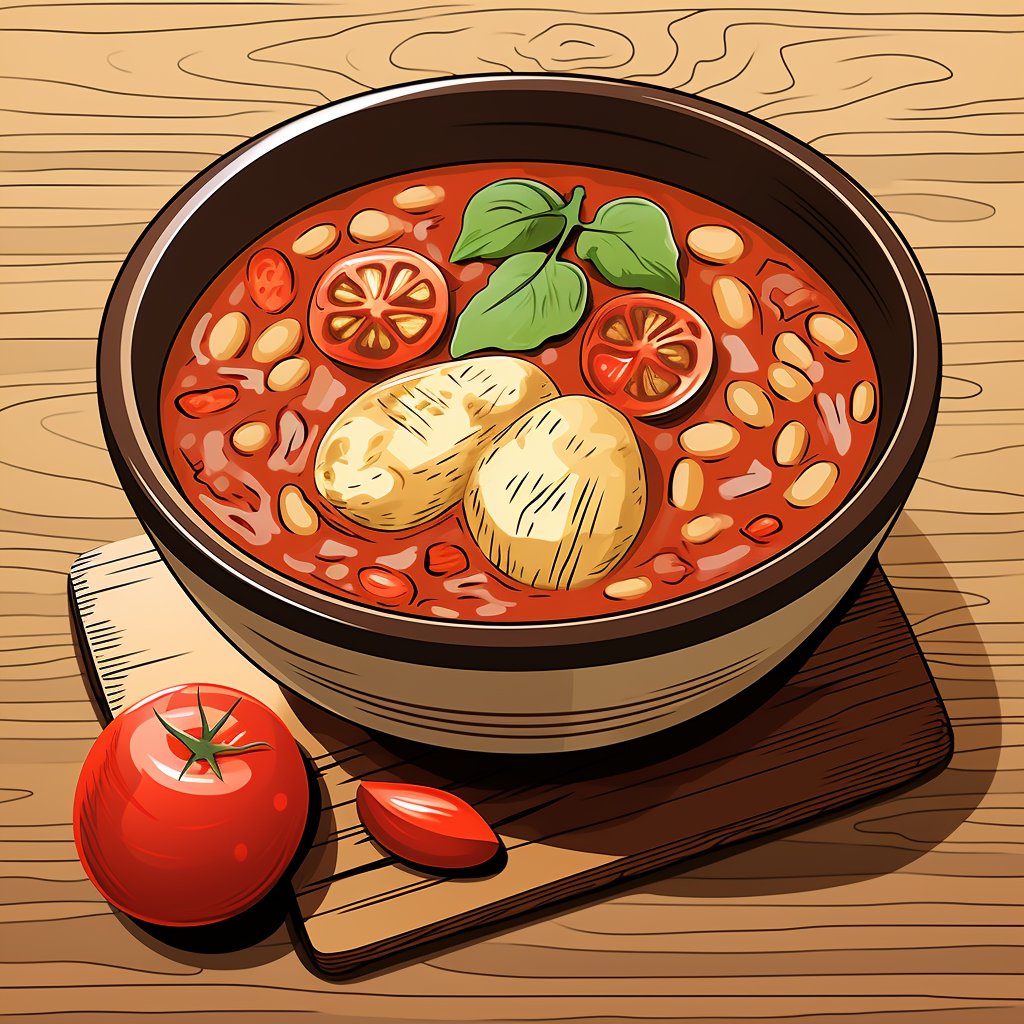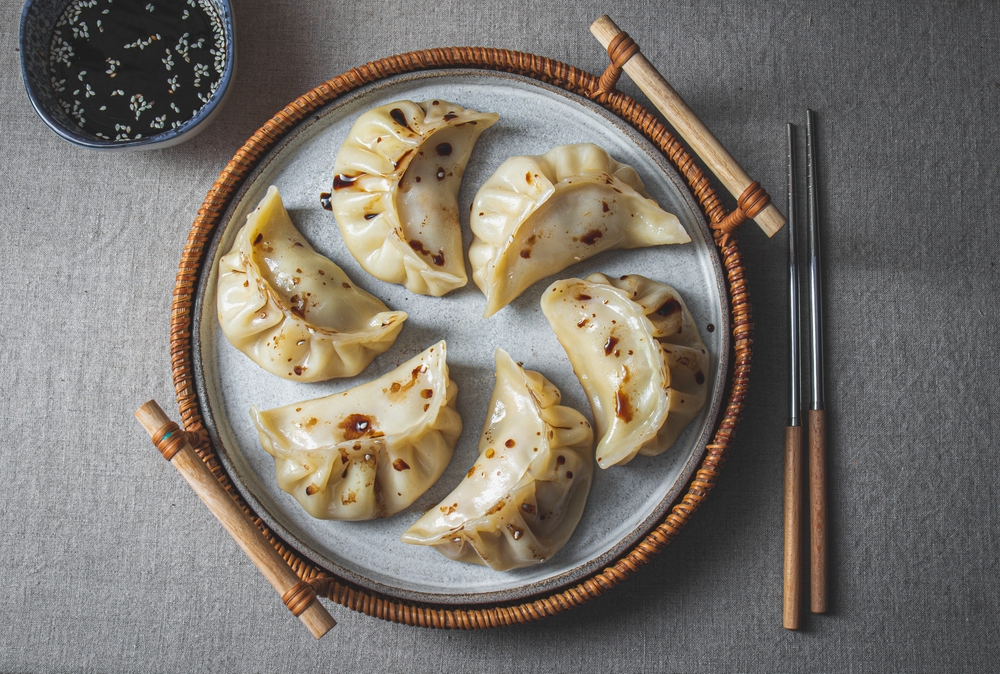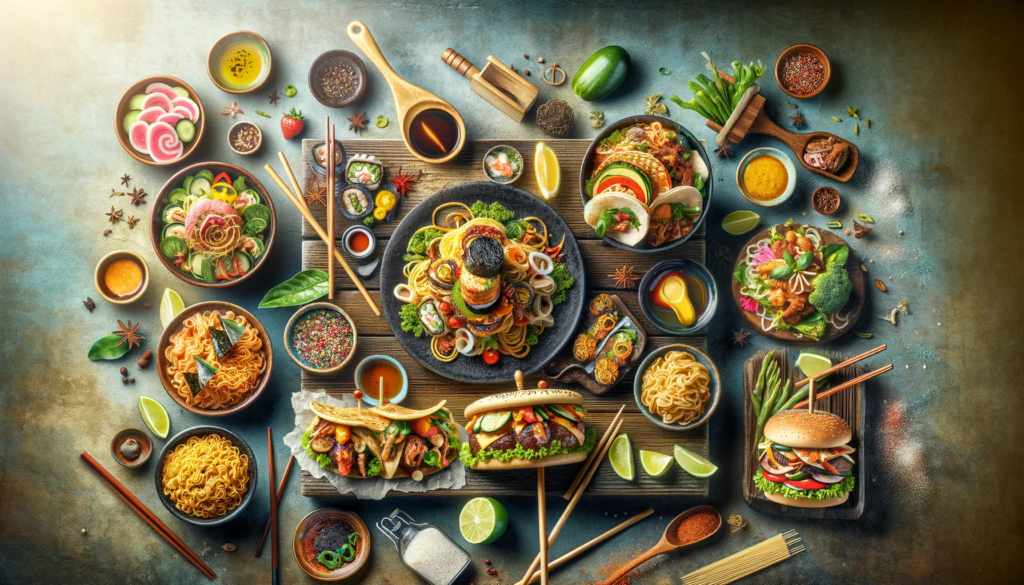Introduction to Guam’s Culinary Traditions
The Blend of Indigenous and Spanish Influences in Guamanian Cuisine
Guamanian cuisine presents a fascinating blend of flavors shaped by its history and geography. Local Chamorro food traditions meet the lasting influence of Spanish colonization, resulting in a culinary tapestry rich in taste and culture. The Spanish brought corn, tomatoes, and peppers, which soon intermingled with the native ingredients such as breadfruit, papaya, and taro, forging a distinctive Gaumainian palate. The island’s position in the Pacific has also attracted other Asian and American influences, further diversifying its gastronomy. This fusion combines cooking techniques, such as the Spanish method of stewing and indigenous grilling practices, to create distinctive flavors that can be found nowhere else in the world.
Staple Ingredients in Guamanian Cooking
The Significance of Seafood, Taro, and Coconut
In the heart of Guamanian cooking lie the timeless staples: fresh seafood, taro, and coconut. The surrounding Pacific Ocean provides an abundance of fish and other sea creatures, which are central to the local diet. Taro, a versatile root vegetable, is revered as a reliable crop for its cultural symbolism, linking Guamanians to their ancestral land practices. Coconut, meanwhile, is a ubiquitous element, used in various forms—milk, oil, and grated flesh—to enrich the flavors of countless dishes, sweet and savory alike. These key ingredients not only define the taste of the island but also represent the sustenance and resilience of the Chamorro people.
Local Fruits and Vegetables Unique to Guam
Guam’s richness in unique produce is evident in the island’s lush landscapes, which yield exotic fruits and vegetables distinct to this Pacific paradise. Indigenous produce like the tangy “da’ok” fruit, nutritious “pika” pepper, and the creamy “abas” contribute to the island’s palette of flavors. These ingredients add a vibrant splash to dishes and root Guamanian cuisine in its indigenous heritage. Chefs and home cooks celebrate the fruits and vegetables of their homeland, creating dishes that are as colorful and diverse as the island’s history itself, encouraging sustainability and a deeper connection with the land.

Iconic Dishes of Guam
Red Rice – A Festive Staple
Red Rice, or “Hineksa’ Agåga,” is a celebratory cornerstone of Guamanian feasts. This vibrant dish inherits its distinctive color from the annatto seed, symbolizing the fiery sunsets of the island. Its robust flavor, often enhanced with garlic and onions, makes it a beloved companion to barbecued meats and seafood. Beyond its gastronomic appeal, Red Rice embodies the spirit of celebration and communal dining. It is a gustatory experience that connects every plate to the island’s festive culture, making it a dish that’s as much about tradition as it is about taste.
Chicken Kelaguen – A Citrus-Infused Favorite
Chicken Kelaguen is a dish that sings with the zest of citrus and the warmth of island spices. After being finely chopped, the chicken is marinated in a blend of lemon juice, freshly grated coconut, and fiery hot peppers, which imparts a refreshing tang and subtle heat. Served cold, this dish is a refreshing contrast to the hot, humid climate, making it a staple at family gatherings and festive occasions. The bright flavors and light but satisfying nature of Chicken Kelaguen capture the essence of Guamanian cooking, mingling love for fresh, nutritious food with community-oriented culinary traditions.
Empanadas – A Savory Pastry with Local Filling
Empanadas offer a perfect example of Spanish influence localized into Guamanian tastes. These handheld pastries feature a tender, golden crust, encasing a hearty filling commonly made with chicken or ground beef, mixed with annatto for its signature red hue, accompanied by the starchiness of Masa harina or grated green bananas. Guamanian empanadas present a delightful parcel of well-seasoned meat and spices, serving up comfort and convenience in every bite. Ideal for meals on-the-go or as appetizers during festive occasions, they are a cherished part of the Guam culinary heritage, encompassing the warmth and heartiness of its people.
Kadon Pika – A Spicy Stewed Chicken Dish
Kadon Pika, or spicy stewed chicken, embodies the bold and fiery side of Guamanian flavors. This tempting dish is steeped in a rich, piquant sauce crafted from soy sauce, vinegar, hot peppers, and a bevy of other seasonings. It often showcases the “donne’ sali” or local boonie peppers renowned for their heat, giving it a memorable kick. Typically served over steamy white or red rice, Kadon Pika is adored for its depth of flavor and ability to ignite the taste buds. It stands as a testament to the island’s love for powerful, stimulating flavors and a showcase of the resiliency and fervor found in Guam’s culinary tradition.
Traditional Cooking Methods of Guam
Barbecue Techniques – The Heart of Guamanian Cuisine
In Guam, the barbecue represents more than just a cooking method—it’s an integral part of the island’s social fabric. Utilizing an open-flame grill, known locally as the “tunu,” Guamanians expertly char meats to succulent perfection, imbuing it with smokiness that only firewood or coconut husks can provide. From succulent pork ribs to marinade-bathed chicken, soy-based marinades and local spices infuse the barbecue fare. This communal activity doubles as a social affair where stories and laughter are shared, reinforcing the role of barbecue as the centerpiece of Guamanian cuisine, both forging and celebrating the bonds within the community.
Open Fire and Earth Oven Cooking
The ancient technique of using open fires and earth ovens, or “umus,” roots Guamanian cuisine in tradition and the primal elements. These methods not only cook but also smoke and preserve the food, such as the taro leaves and banana-stuffed fish, yielding a rich depth of flavor. The low and slow approach of earth ovens tenderizes the toughest cuts of meat, encapsulating them in an earthy essence. This style of cooking serves a two-fold purpose: it honors the past, keeping ancestral cooking practices alive, and it maximizes the natural flavors of local ingredients, demonstrating the harmonious relationship between Guamanian food and its environment.
The Role of Food in Guam’s Culture and Celebrations
The Importance of Feasting and Food in Community Life
Food in Guam is more than just sustenance; it is the centerpiece of community life and a pivotal aspect of all social interactions. Feasting is commonplace, noted for its capacity to unite people and strengthen community bonds. A Guamanian gathering often showcases a bounty of dishes, each prepared with care, to honor guests and celebrate togetherness. From birthdays to weddings and village fiestas, these feasts highlight the island’s spirit of generosity and camaraderie. Sharing a meal on Guam is sharing a piece of its heritage, steeped in the values of hospitality and mutual respect that define the Chamorro culture.
Traditional Foods in Chamorro Festivities
Chamorro festivities in Guam are vibrant affairs characterized by various traditional foods that hold historical and cultural significance. Dishes like BBQ, Kelaguen, and Titiyas, are not just customary; they’re symbolic threads woven into the cultural fabric. The perpetuation of these culinary traditions allows each generation to taste their history, celebrating their unique identity through flavors passed down over centuries. In the joyful chaos of song, dance, and camaraderie during local fiestas, the food serves as an edible mosaic of Guam’s storied past and spirited present.
Modern Twists on Traditional Guamanian Recipes
Fusion Dishes and Contemporary Interpretations
Guamanian cuisine experiences a renaissance as the global palate evolves through fusion dishes and contemporary interpretations. Chefs on the island and in the diaspora artfully marry traditional flavors with modern culinary trends, creating innovative dishes that pay homage to Guam’s heritage. Ingredients like taro and coconut are given new life in avant-garde presentations, bridging generations and geographies. This inventive spirit broadens the appeal of Chamorro cooking and places Guam firmly on the gastronomic map as a cuisine that respects its roots while embracing the winds of change.
Adapting Ancient Recipes for the Modern Palate
Ancient Guamanian recipes are being revitalized to cater to modern tastes and lifestyles while respecting tradition. These adaptations consider the contemporary emphasis on health and pace of life, often streamlining cooking processes and incorporating nutrient-rich substitutes without sacrificing flavor. The modern palate also seeks a diverse flavor profile which these updated recipes deliver, ensuring the longevity and relevance of Guamanian cuisine. This careful balancing act preserves the soul of Chamorro dishes while allowing for experimentation and evolution, presenting a forward-looking culinary narrative.

Health and Nutrition in Guamanian Cuisine
Nutritional Benefits of Traditional Ingredients
The traditional ingredients of Guamanian cuisine are not only flavorsome but also packed with nutritional benefits. Items such as fresh seafood provide omega-3 fatty acids vital for heart health, while fruits and vegetables offer a plethora of vitamins, minerals, and fiber essential for overall wellness. Furthermore, traditional staples like taro and breadfruit are rich in complex carbohydrates and slow-releasing energy. Understanding the healthful aspects of these indigenous ingredients encourages their continued use and reaffirms the value of traditional foods in a balanced diet, promoting health and vitality within the community.
Embracing a Healthy Island Diet
Historically, Guamanians have thrived on a diet highlighting the natural abundance of their island environment: a rich variety of seafood, tropical fruits, root vegetables, and lean meats. This diet has inherently been balanced and nutritious, fostering a lifestyle harmonious with the island’s resources. Contemporary endeavors to maintain this healthful eating pattern focus on minimally processed foods, portion control, and including a wide spectrum of local produce. As awareness of the importance of diet on health rises, embracing the traditional island diet presents an opportunity to cultivate healthier communities while safeguarding Guam’s culinary heritage.
Preparing Traditional Guamanian Dishes at Home
Recipes and Cooking Tips for Iconic Guamanian Meals
Bringing the flavors of Guam into your kitchen can be a delightful culinary adventure. With access to tried and tested recipes for iconic Guamanian meals, home cooks can recreate the island’s festive fare. Key to success are tips like using authentic ingredients such as coconut milk and annatto seeds, incorporating traditional cooking methods, and understanding the balance of flavors that define Chamorro cuisine. Discovering these recipes is not just about preparing food; it’s about experiencing and preserving a culture, inviting a piece of Guam’s warm, communal spirit into one’s home.
FAQs on Traditional Food in Guam
What are the foundational flavors in Guamanian cuisine?
Guamanian cuisine, known as Chamorro cuisine, has foundational flavors deeply influenced by a medley of indigenous Chamorro, Spanish, Filipino, and Pacific Islander heritages. Key flavors include the nuttiness of coconut, the spice of hot peppers, and the tang of citrus fruits, particularly lemon. Added to these are aromatic elements like garlic and onion, and the earthy tone of annatto seeds impart color and flavor, especially to the iconic Red Rice.
How vital is seafood in the traditional diet of Guam?
Seafood is vital in the traditional diet of Guam, thanks to the island’s proximity to abundant marine resources. The surrounding Pacific waters provide a rich variety of seafood reflected in the local cuisine. Fish, octopus, and shellfish form the backbone of many traditional Guamanian dishes, providing essential nutrients and flavors that have sustained the Chamorro people for centuries, ranging from everyday meals to ceremonial dishes.
Can traditional Guamanian dishes be adapted for vegetarian or vegan diets?
Yes, traditional Guamanian dishes can be adapted for vegetarian or vegan diets. While many classic recipes feature meat and seafood, the cuisine also includes a variety of vegetables and fruits that can be used as substitutes. Ingredients such as eggplant, breadfruit, and jackfruit make excellent meat alternatives, especially when marinated and cooked with traditional Chamorro flavors. Legumes and tofu can also be incorporated to create satisfying, plant-based versions of Guamanian favorites.
What is the significance of feasting in Guam’s culture?
Feasting is integral to Guam’s culture, epitomizing the spirit of inafa’maolek, or interdependence and harmony within the community. Large communal meals at gatherings and celebrations are a way of life, showcasing not only food’s role as nourishment but also its place in social bonding, mutual respect, and expressing generosity. Each feast also transmits traditions, as elders pass down recipes and cooking techniques to younger generations, solidifying the communal ties and identity of the Chamorro people.
Are there any special cooking techniques unique to Guamanian cuisine?
Guamanian cuisine utilizes several cooking techniques unique to the culture, stemming from centuries of tradition. For instance, cooking over an open flame or “tunu” endows dishes with a distinctive smoky flavor. Another technique is using “umus,” or earth ovens, where hot stones and banana leaves are used to slow-cook and steam food. Additionally, the act of “kelaguen,” wherein proteins like chicken or seafood are “cooked” using citrus juice, is unique to Chamorro culinary practices.
How has Guamanian cuisine evolved with modern influences?
Modern influences have certainly made their mark on Guamanian cuisine, introducing new ingredients and styles creatively incorporated into traditional dishes. Globalization has brought foods like sushi and hamburgers to the island, while trends in health and wellness have led to lighter, more vegetable-centric interpretations of classics. Chefs and home cooks alike continue to innovate, fusing traditional Chamorro flavors with contemporary techniques and global cuisines, ensuring the evolution of Guam’s culinary landscape remains dynamic and relevant.



